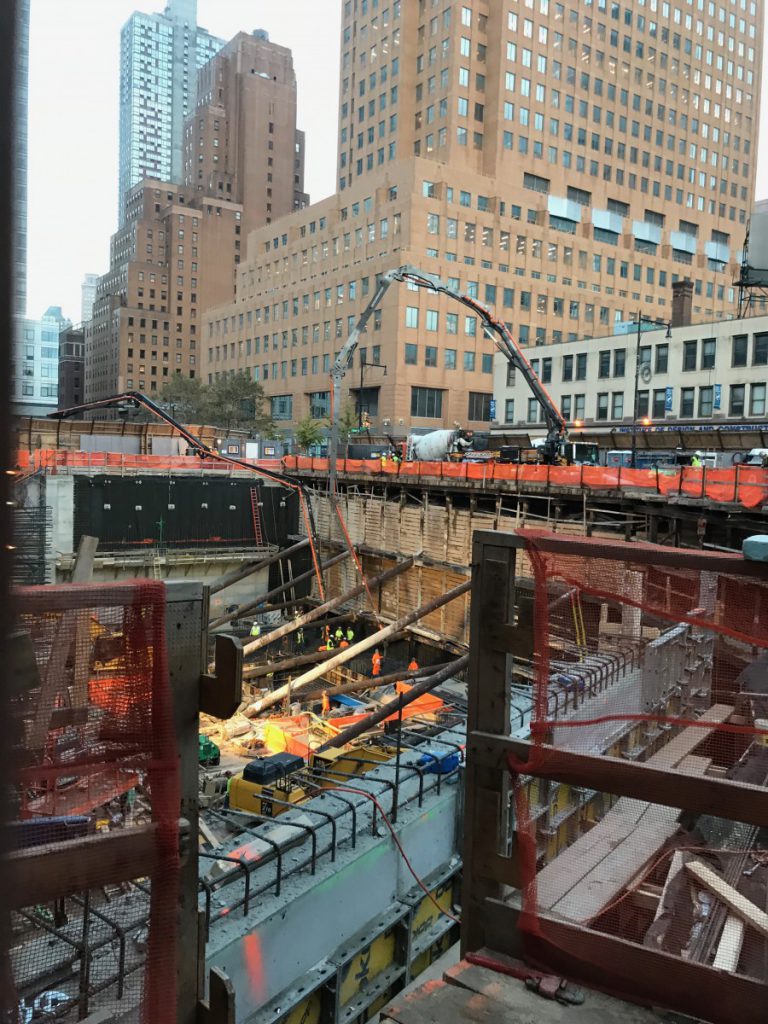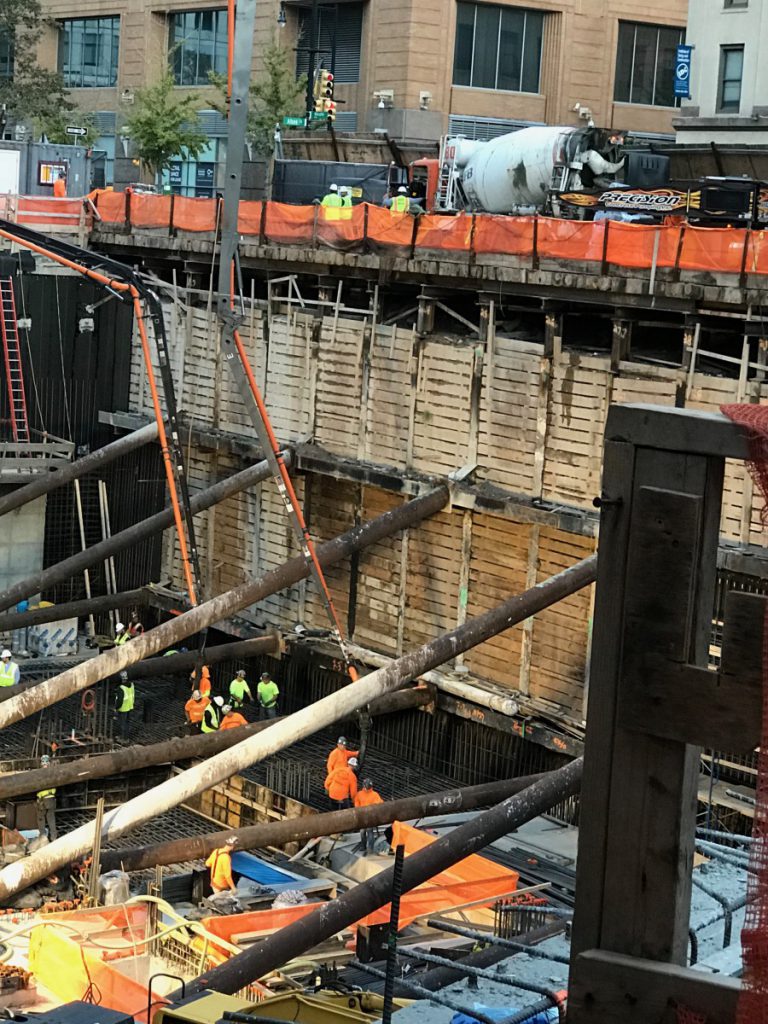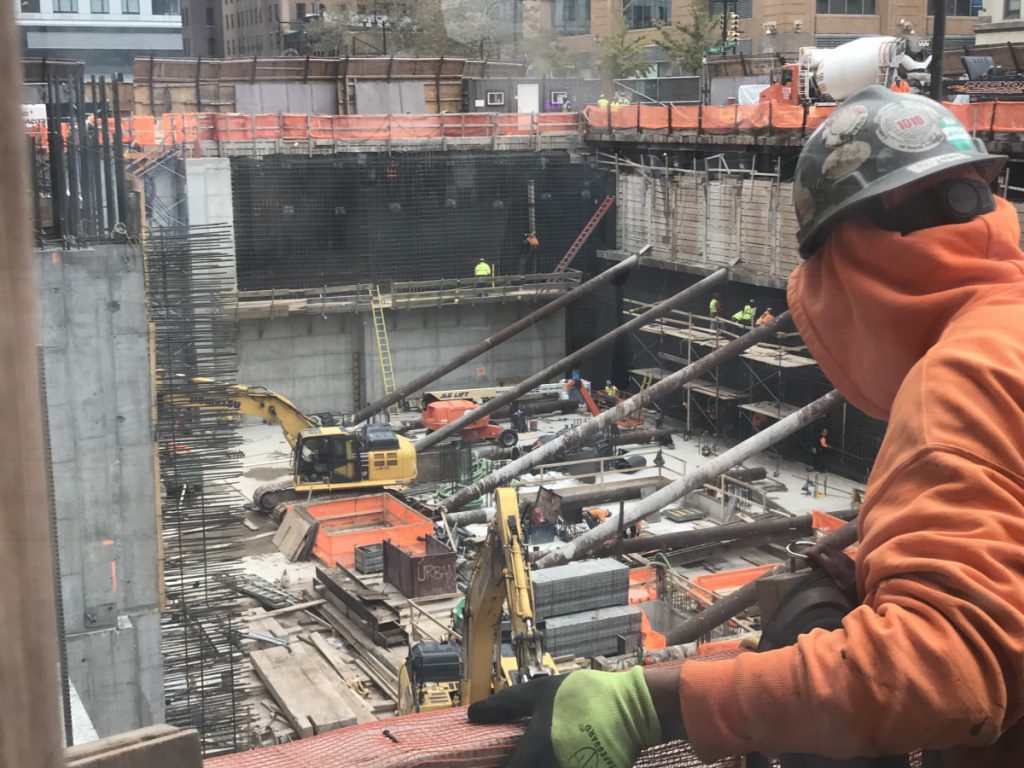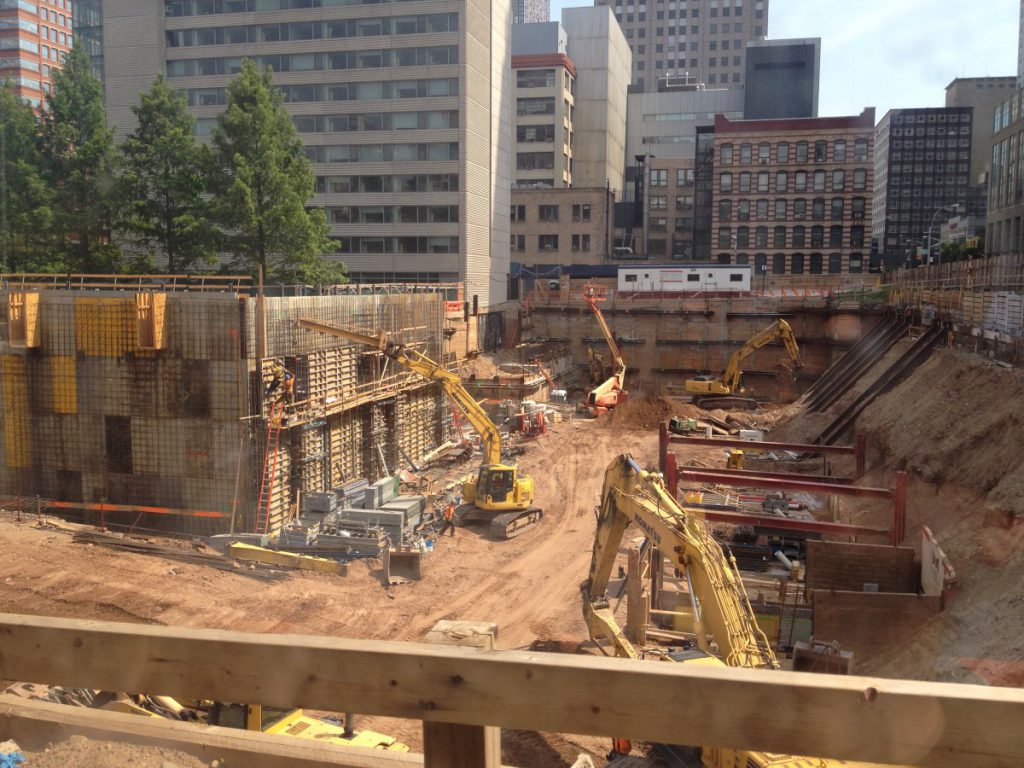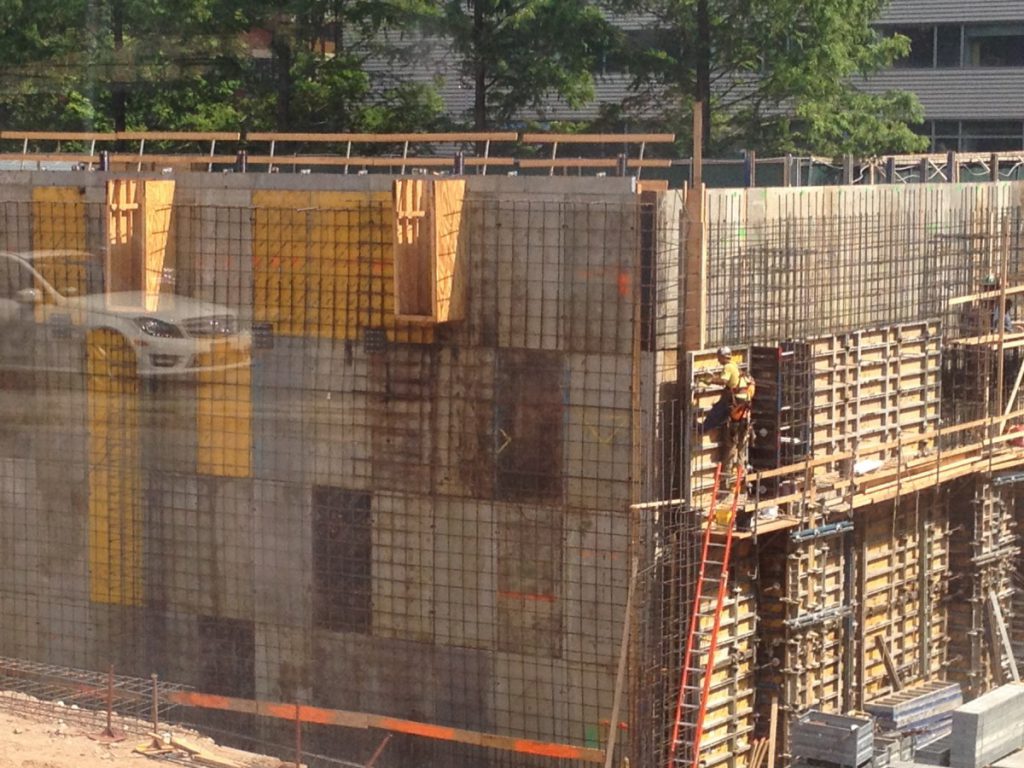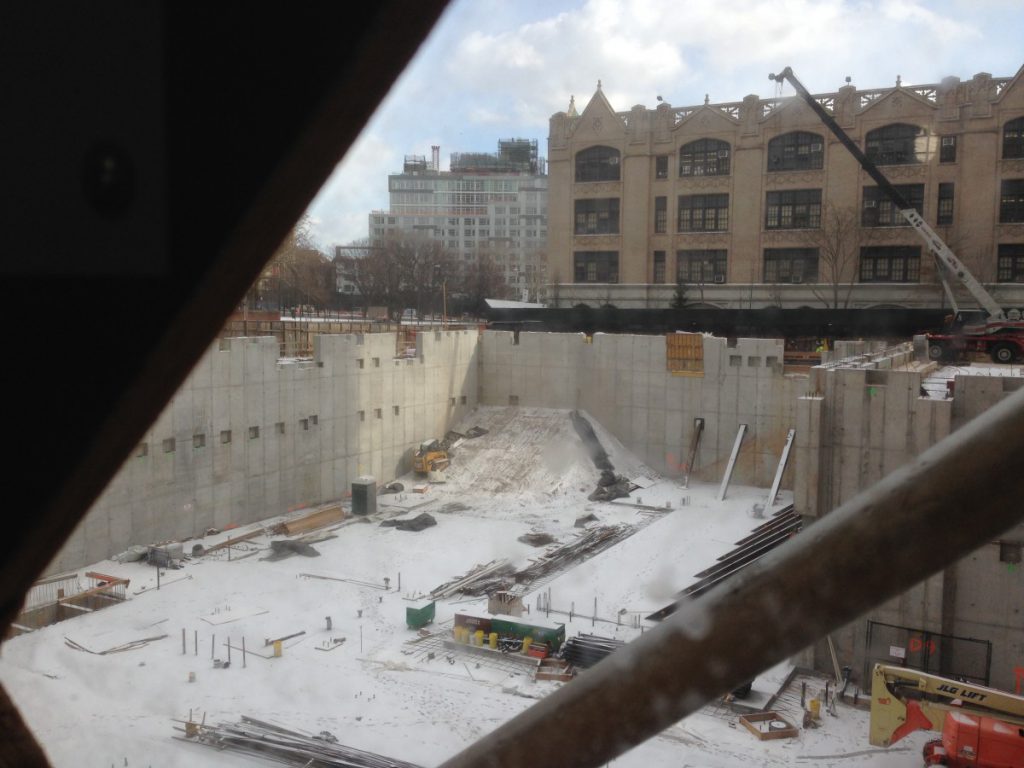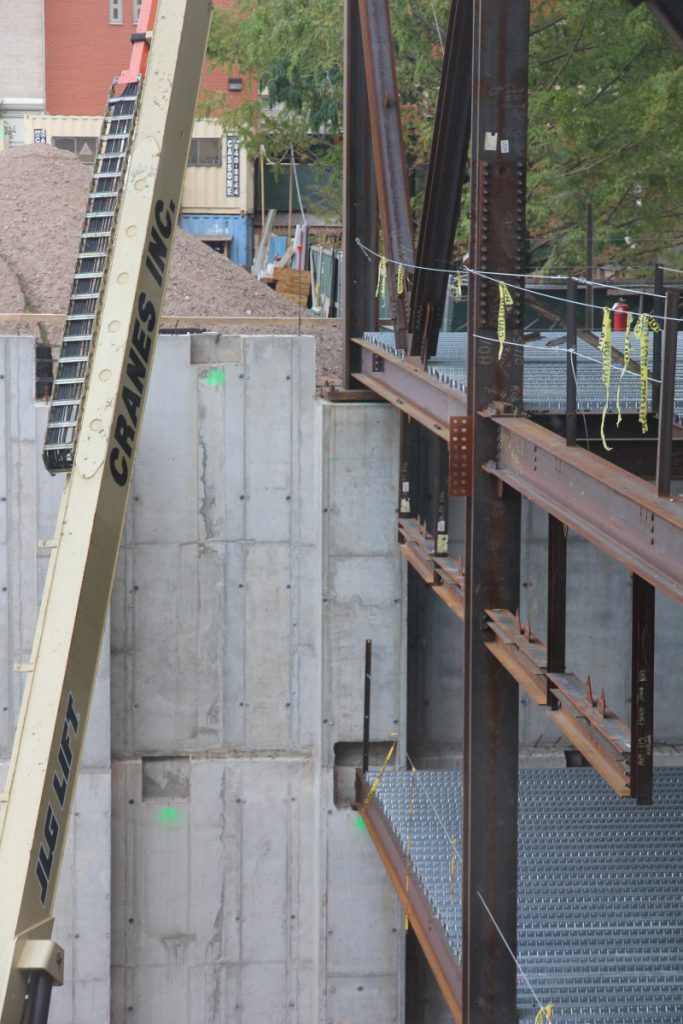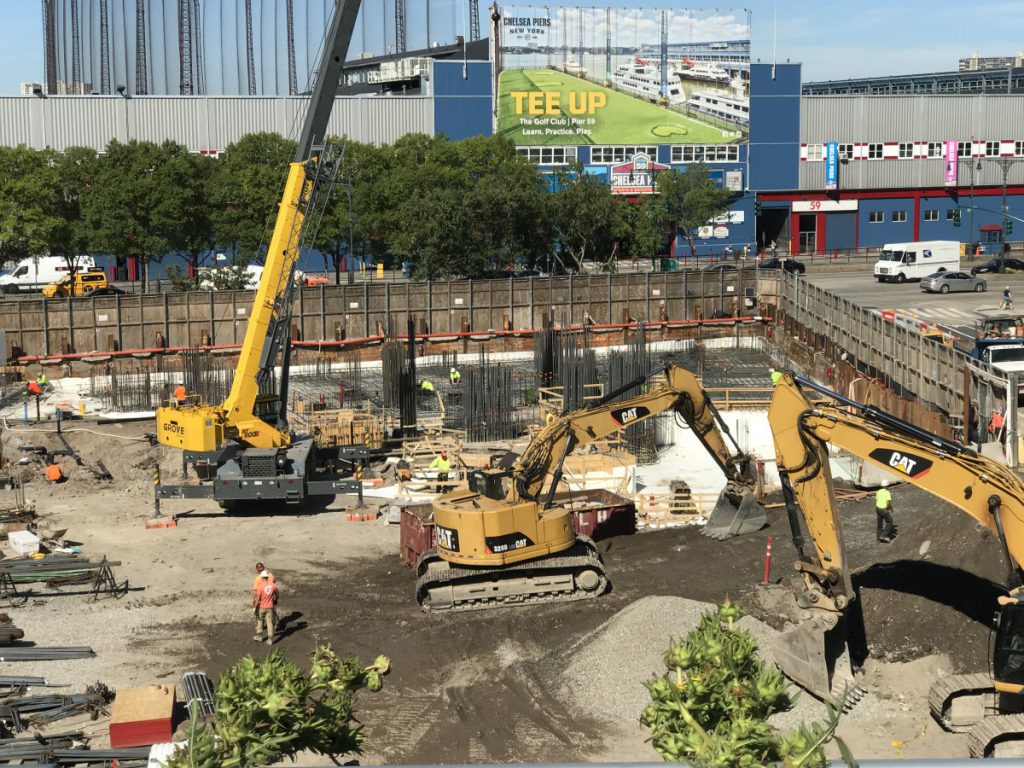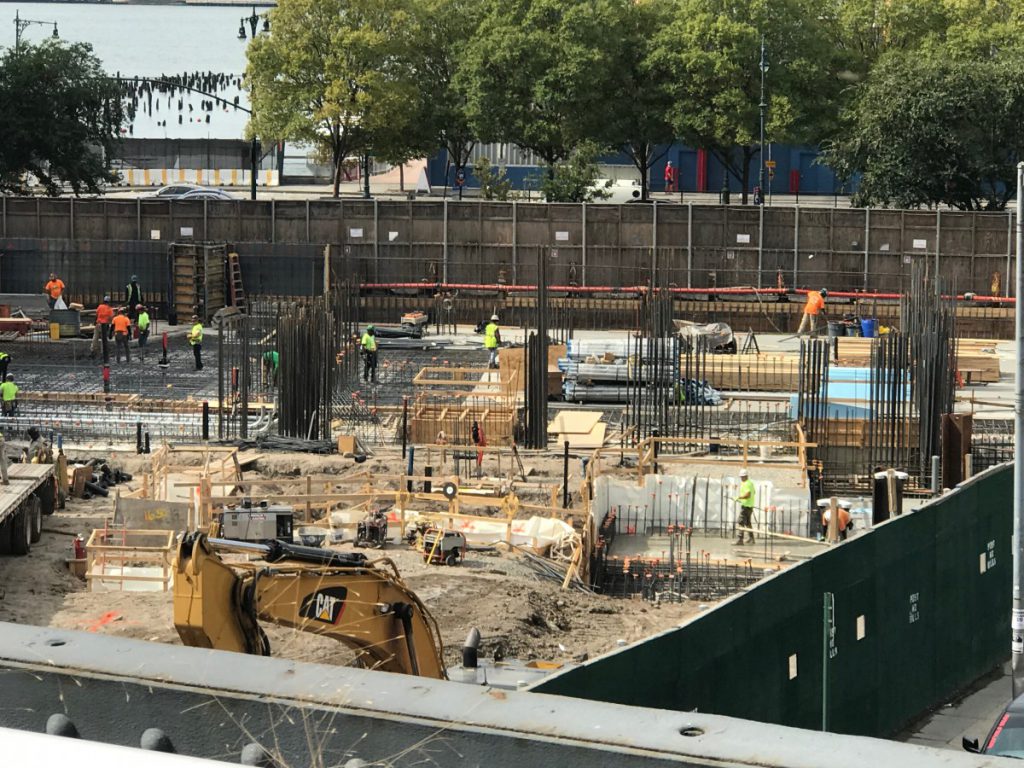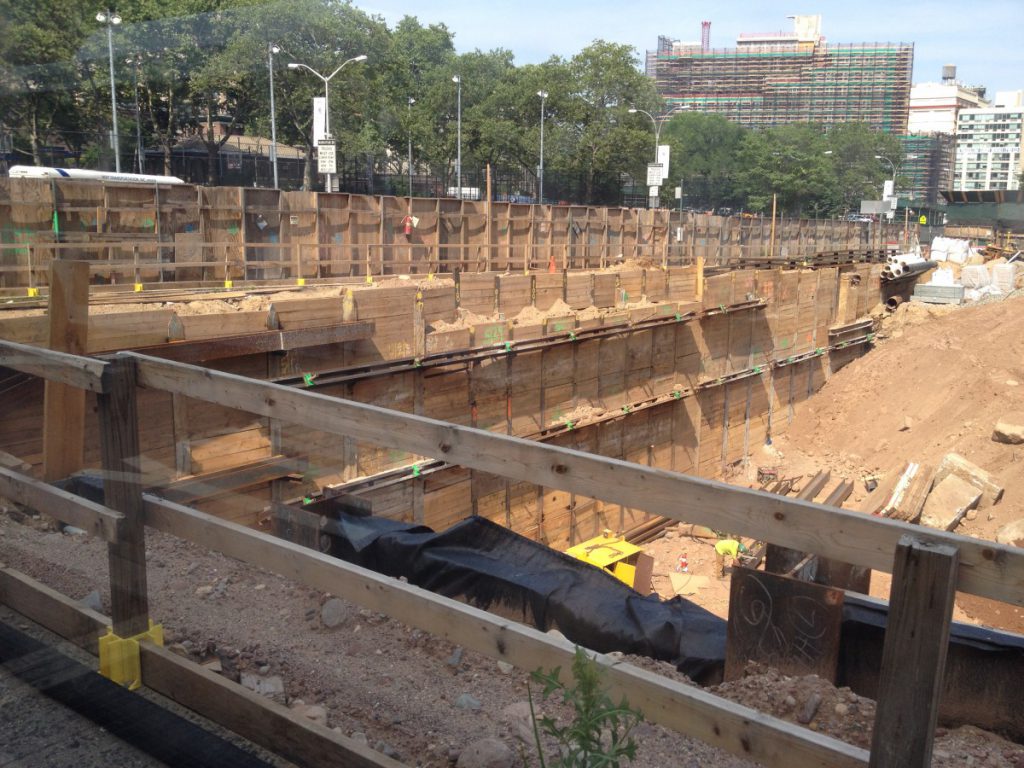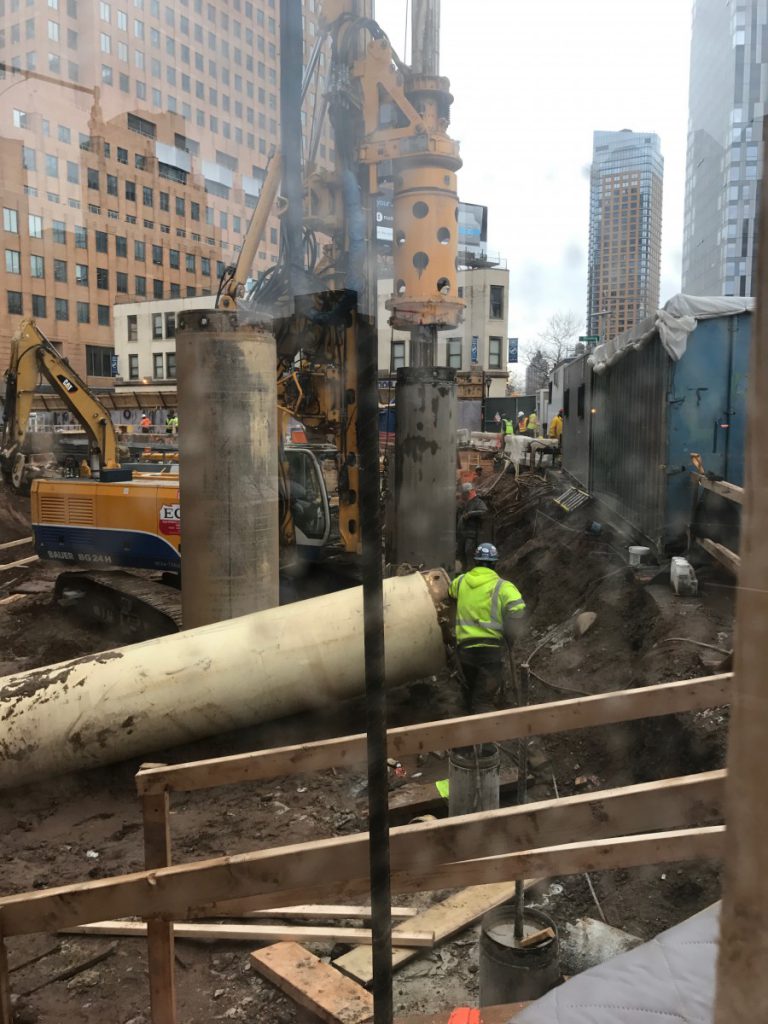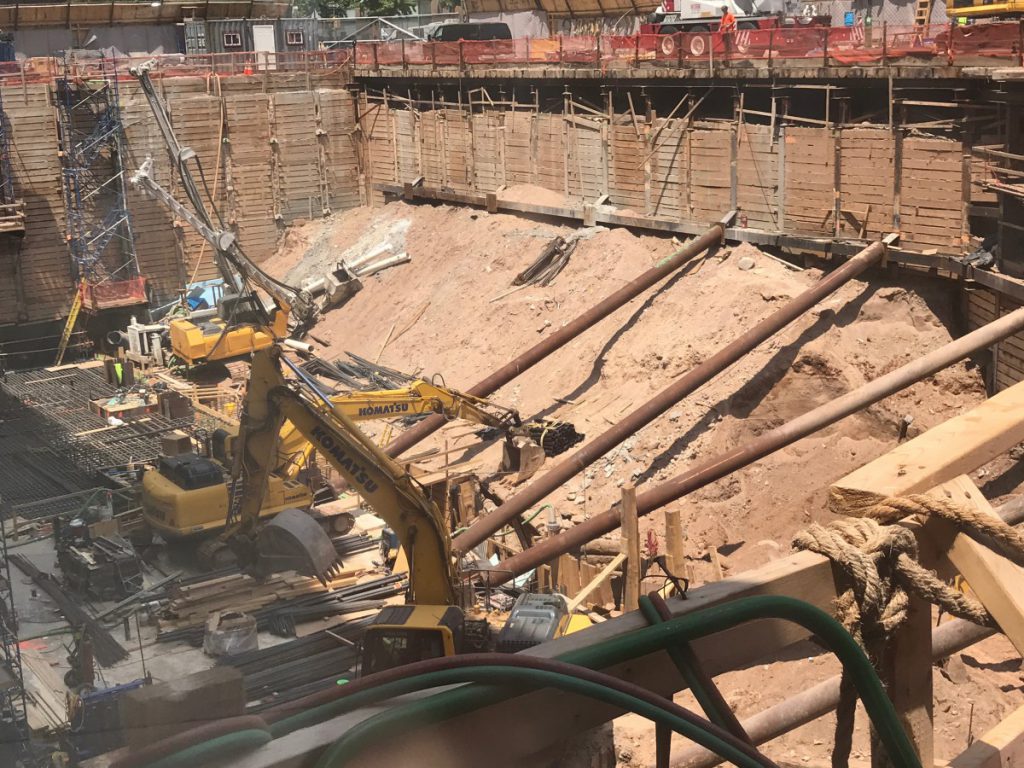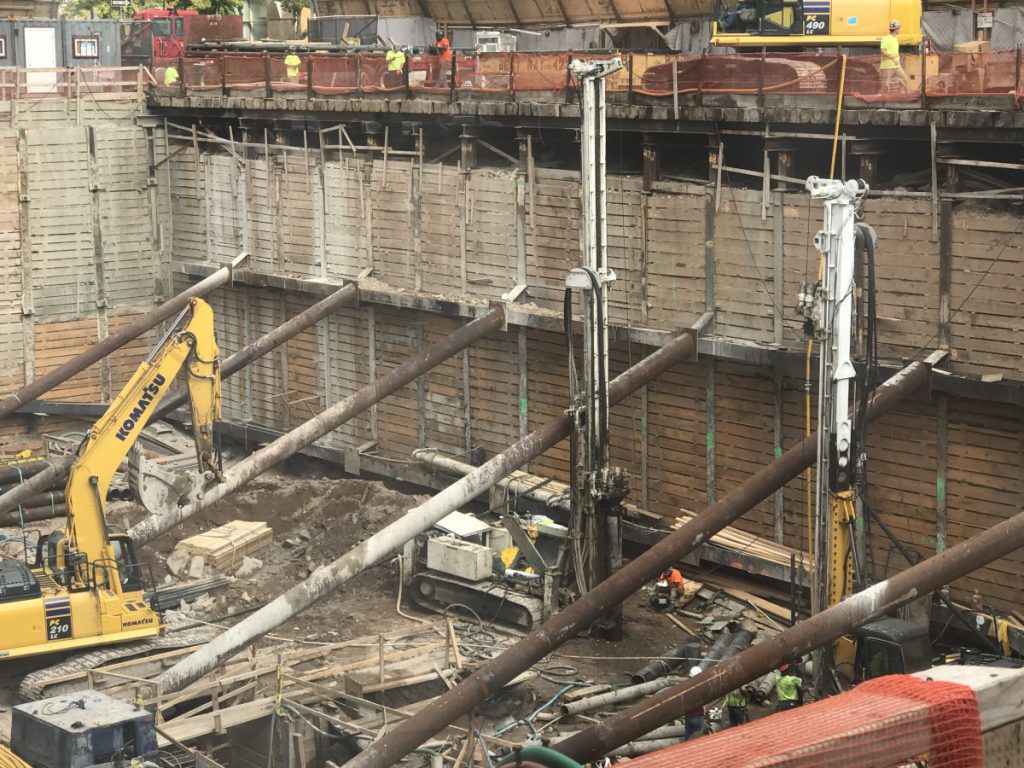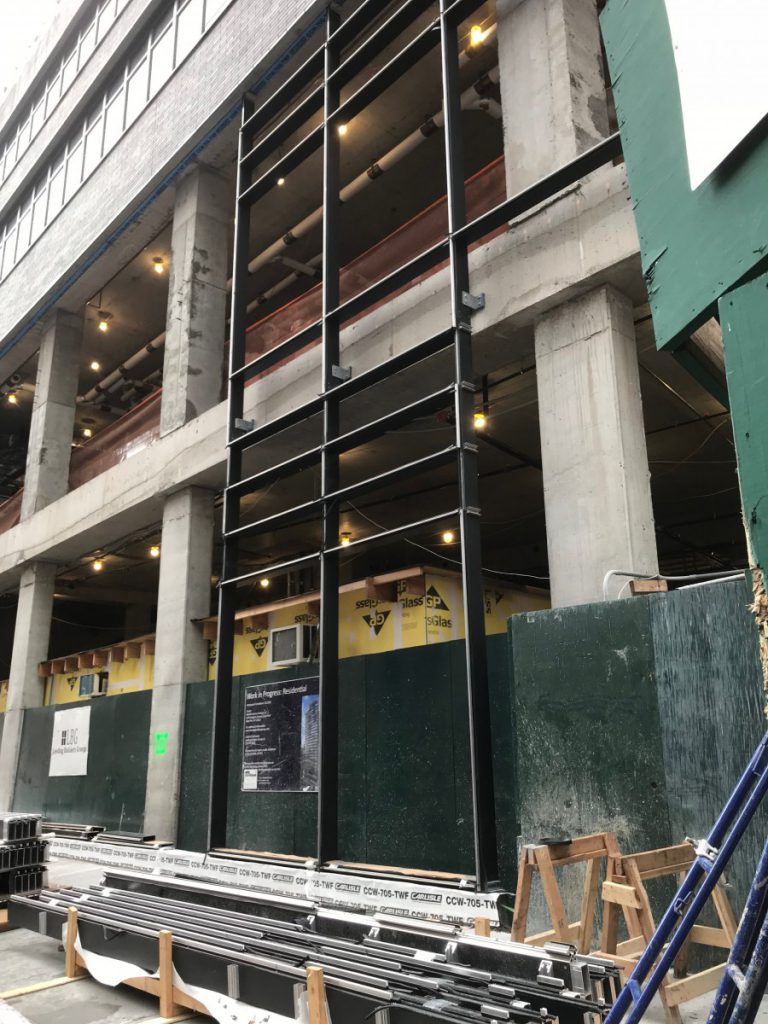
Here is another stick system installation around 30th and 6th Ave in Manhattan. We can see the thermal break and interior gaskets exposed on the aluminum mullions, anticipating the installation of the insulated glass units and the pressure plate and cover. Steel angles anchor the mullions to the concrete spandrel beam. Shims are visible between the steel angle and the concrete beam.
The exterior wall above for the tower appears to be a window wall, likely installed as a unit system. The curtain wall system at the base spans from the sidewalk to the ceiling of the second floor.

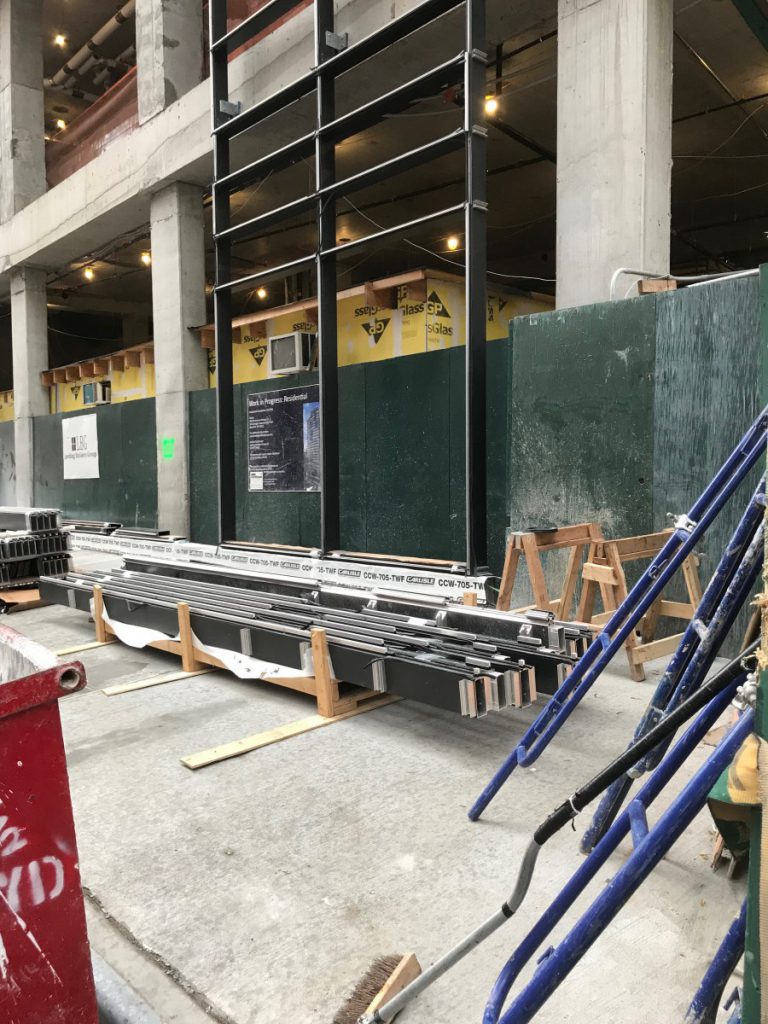

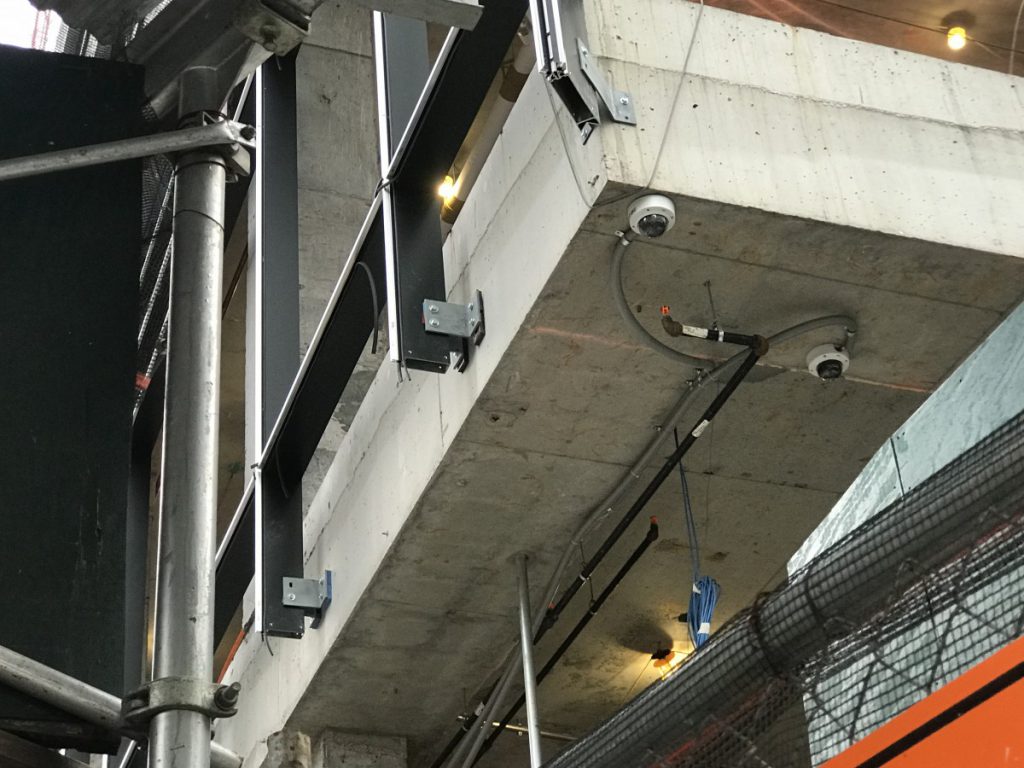

Structure is central to architecture, but too often structure is relegated to a mere perfunctory role when it is entombed and no longer apparent. Construction sites remind us of the power of structural form and its timeless potential to provoke aesthetic engagement using nothing more than material and the awareness of weight.
This aesthetic power of structure often arises when atypical conditions are necessary, leading to nuanced structural configurations. In the case of the building illustrated below, on the Upper East Side, the resolution of the concrete frame where it cantilevers over the adjacent building generates a nuanced quality, with the width of the piers reducing at the levels where the diagonal piers shift the load from the cantilever to the primary mass of the structure. Thin structure below wider structure plays on our sense of weight. The thin piers delicately hover over the neighboring building, giving a visual accent to the adjacency. The change of structural thickness endows the form with these qualities. Without the change, the structure would remain in the realm of functional and utilitarian, without any stimulus to make an aesthetic observation. This is the tectonic potential of structural form.
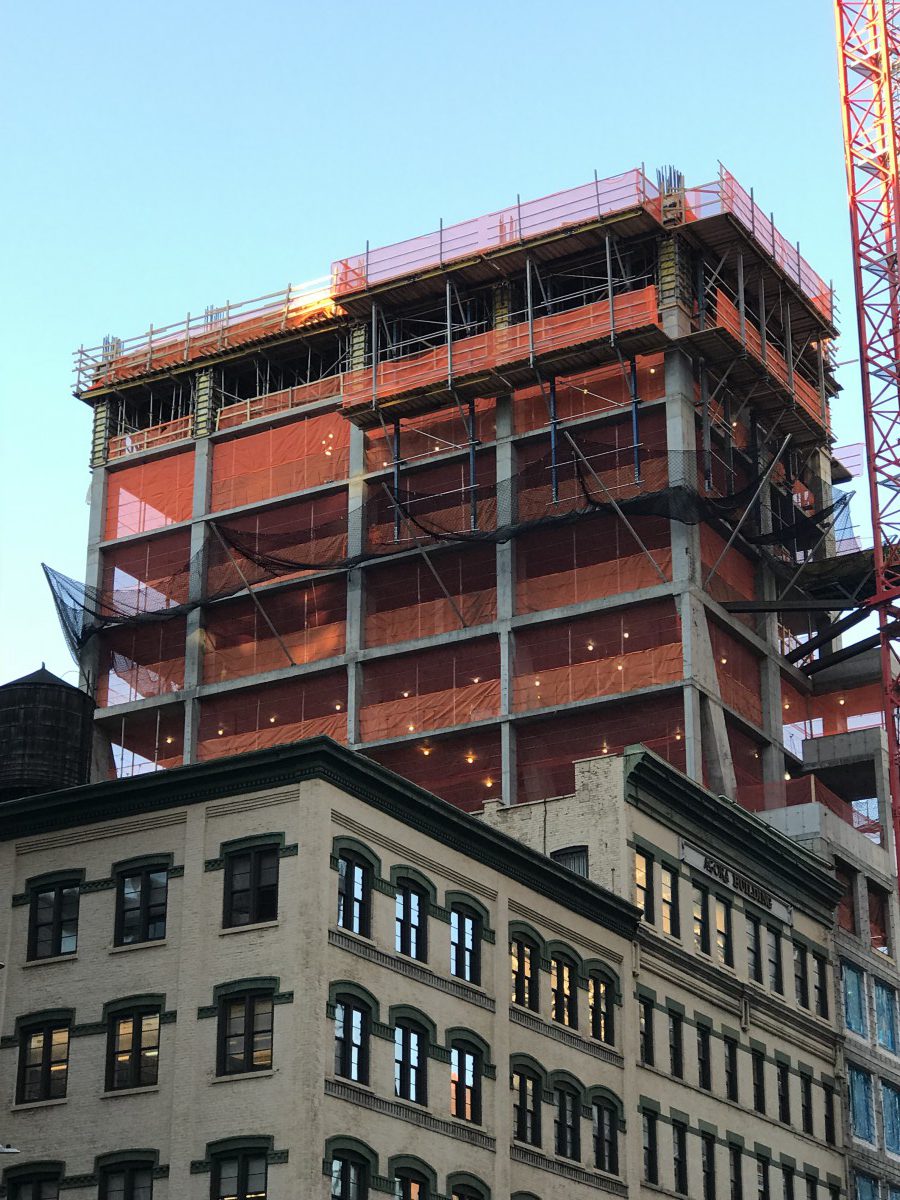
A concrete frame structure is going up on the East Side with an unusual detail: reinforcement bar projects from the concrete piers horizontally. This could be a unique method of anchoring the exterior skin to the building. Some of the rebar appears to be dangerously close to the pier surface, with inadequate cover. Moisture penetration and freeze thaw will cause serious problems if the skin is not sealed carefully. Will keep an eye on this site to see how the project develops. 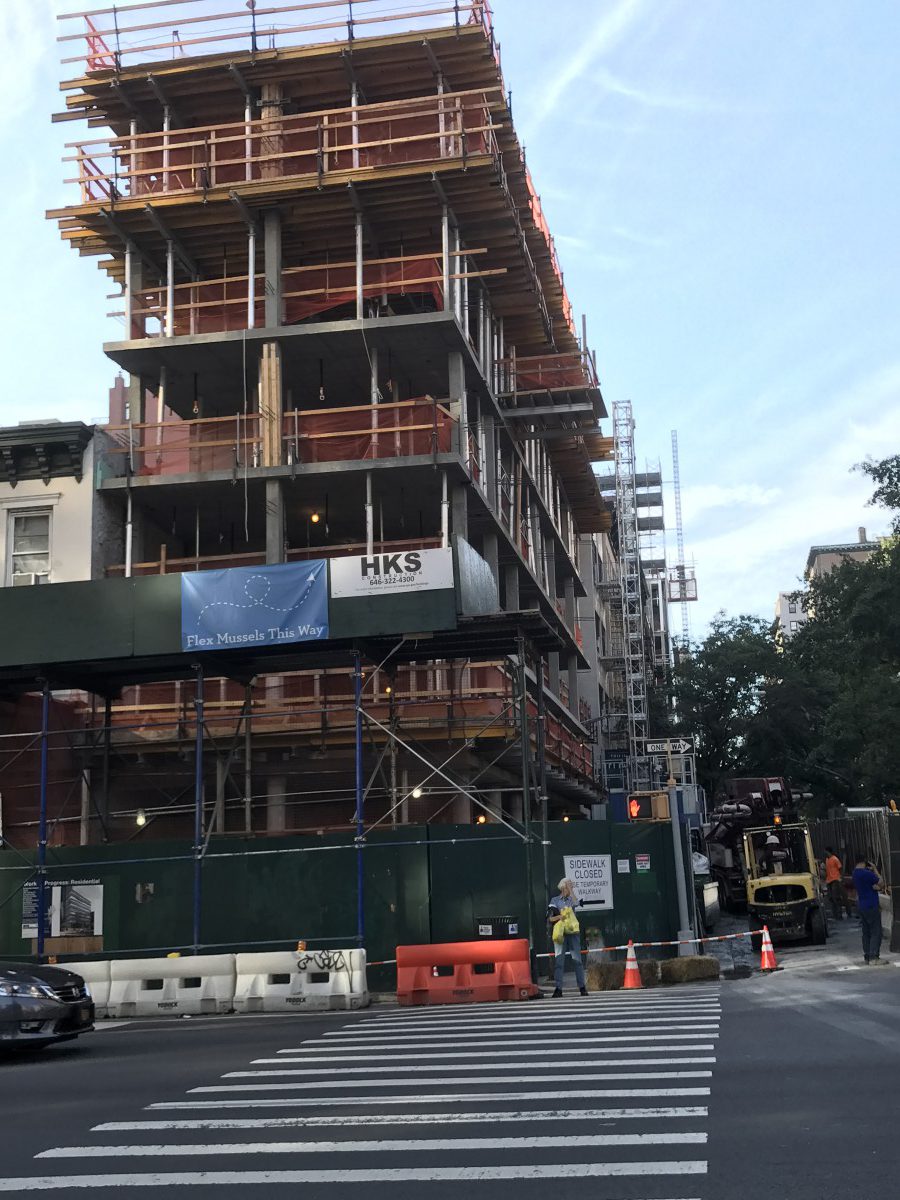
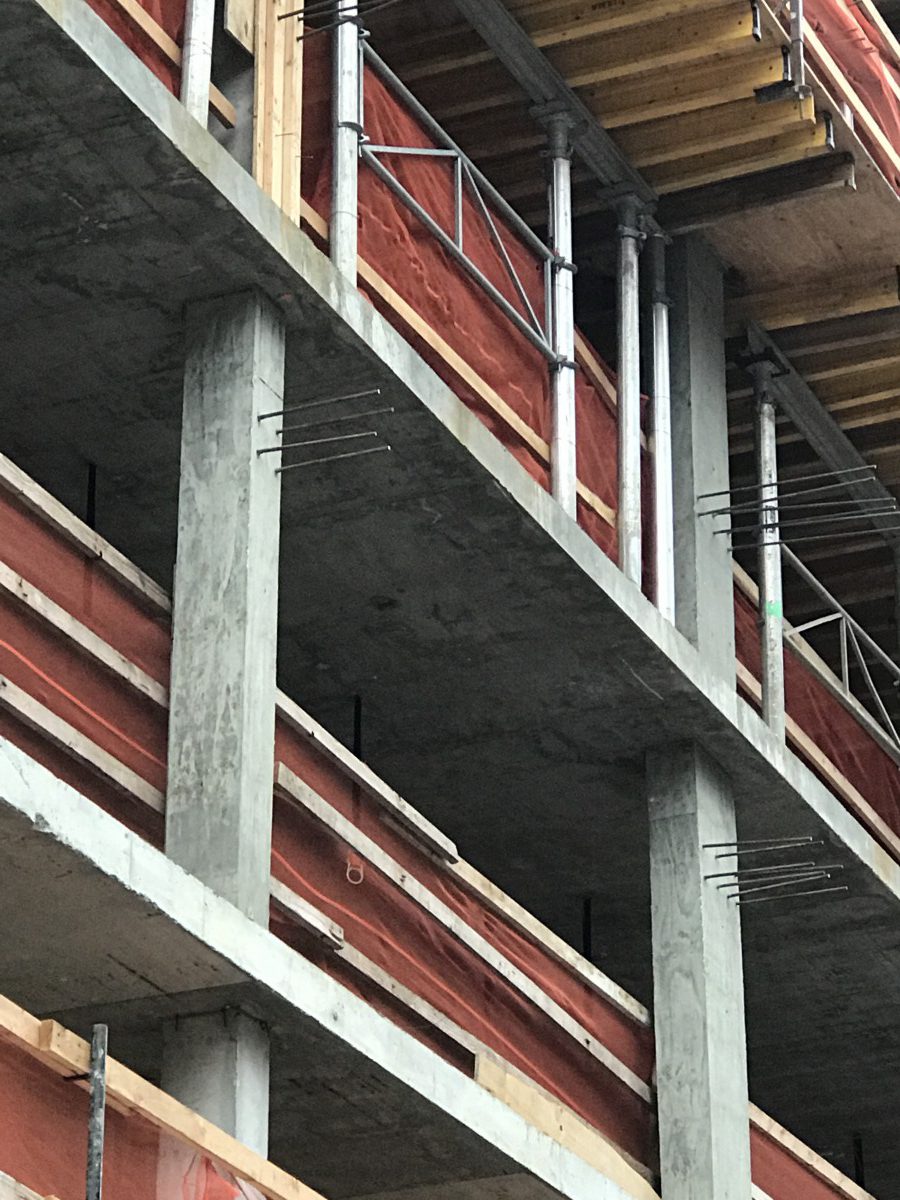
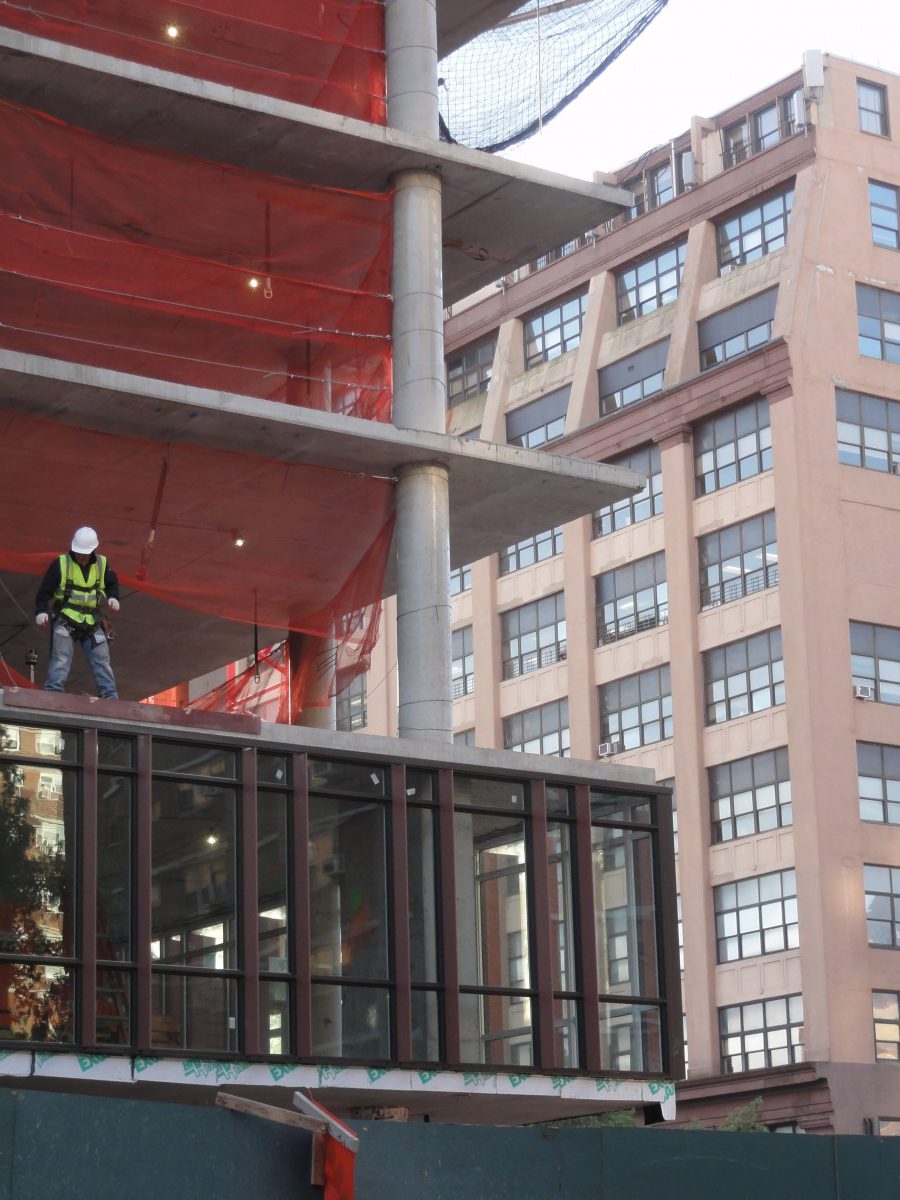
Above we see the initial installation of the window wall on this new residential building in Brooklyn. This view shows the base of the building, which has a more transparent envelop than the main tower of the building. The window wall installs between the slabs. The subsequent levels of window wall include an insulated slab edge cover.
In the view below we see the installation progressing. A track is visible that is installed to the underside of the upper slab to secure the top of each floor’s window wall. The lower edge of the window wall locks into the previously installed units on the floor below.
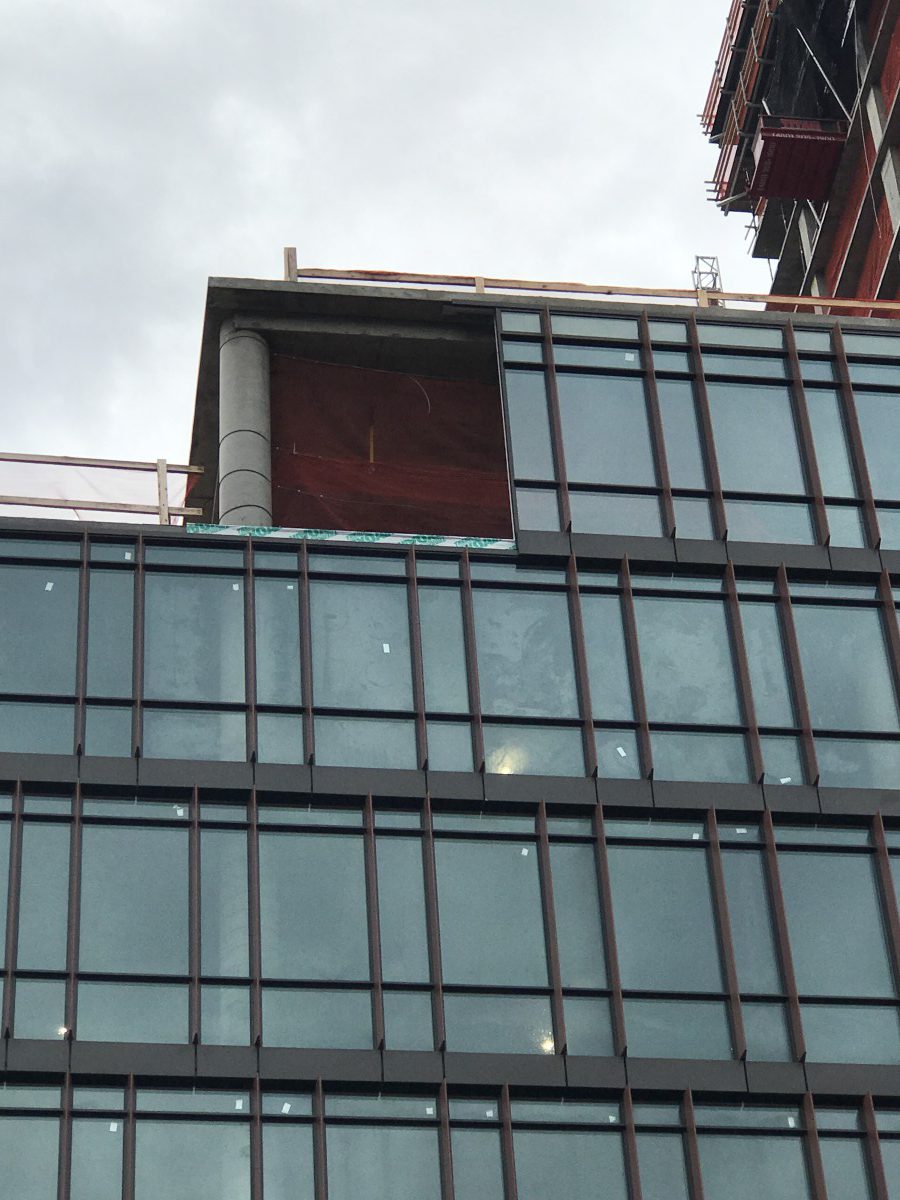

This site for a new residential tower is on 2nd Ave in Manhattan, at a low elevation that is within the flood zone. The foundation design consists of a series of caissons drilled to the depth of bedrock (most likely). This foundation approach avoids creating a basement that would be exposed to flooding.
In this view we see the rig drilling a new caisson pier, with the drill inside the steel casing. The rig pushes the casing down as the drill proceeds to temporarily hold the walls of the excavation from collapsing. This pier is tight to the party wall of the adjacent building. With a series of caissons along this party wall, it is likely that underpinning can be avoided.
An earlier site view below shows the drill as it is aligned with another casing.


Upper East Side New Residential Tower extends over existing pre-war office building. Diagonal column shifts load from cantilevered corner to lower frame and foundation around the existing building. Diagonal column will likely be covered with conventional punched openings and not be visible from exterior when exterior cladding is added.

Professor Montgomery's Construction Blog






